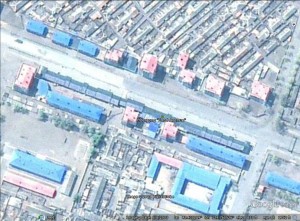According to Yonhap, the DPRK’s food imports increased over the summer:
North Korea’s crop imports from China rose 16.5 percent in August from the previous month, data showed Tuesday, indicating stability in food supply for people in the impoverished nation.
According to the data compiled by Kwon Tae-jin, a researcher at the Korea Rural Economic Institute, North Korea imported 26,804 tons of grains such as flour, rice, corn and bean in August from its neighboring country, compared with 22,988 tons a month earlier.
The North spent a total of US$15.4 million to buy the crops that month, the largest monthly spending for the year, the data showed.
August also marked the seventh consecutive month that the North’s crop imports topped 20,000 tons.
“Since February, the North has imported more than 20,000 tons of crops per month from its strongest ally,” Kwon said.
“Factoring in the forecast of good harvests for the autumn thanks to good weather conditions, the North is expected to enjoy a relatively stable supply of crops at least for the rest of the year,” he added.
Meanwhile, North Korea’s fertilizer imports from China totaled 183,639 tons in the January-August period, down 27.1 percent from the same period a year earlier, according to the data.
North Korea’s domestic food production is also apparently higher. According to Yonhap:
North Korea’s grain harvest is expected to grow about 8 percent this year from 2012 thanks to relatively favorable weather conditions, a source with the knowledge of food situation in the communist nation said Wednesday.
The North is estimated to produce as much as 5.3 million tons of grains this year, a 7.7 percent increase from 4.92 million tons last year, the source said on the condition of anonymity.
This year’s estimated grain harvest roughly meets with the North’s annual demand of 5.4 million tons. The annual demand was calculated by South Korea’s state-run Korea Rural Economic Institute.
“Grain harvest in North Korea this year is much better than last year because there were no big natural disasters, except for heavy rains in July this year,” the source said.
Despite the positive assessments of the DPRK’s food supply, the UN warns more food assistance is needed. According to Yonhap:
North Korea remains one of the 34 countries in the world that require external assistance to properly feed their people, a media report said Friday.
The Voice of America said the October issue of Crop Prospects and Food Situation by the Food and Agriculture Organization (FAO) estimated that there will be some 2.8 million “vulnerable” people in the communist country needing assistance until this year’s fall harvest.
The Washington-based media outlet said that judging by official estimates tallied by the United Nations organization, Pyongyang’s spring cereal harvest for 2013, mainly winter, wheat and barley, fell shy of the initial forecast, and that this is the main reason for the current shortage.
The country had reported improved harvests in the fall of 2012.
The U.N. agency also said people in the country are experiencing “widespread lack of access” to food caused in part by past floods.
The latest findings added that overall conditions in the North have not changed vis-a-vis July when the last food situation report was released.
At the time, the North was the only country in East Asia to be placed on the list requiring external aid. Others on the list of the 34 countries were in Africa and Central Asia.
The FAO, meanwhile, estimated that the North has been able to secure 328,000 tons of various grain from November of 2012 to early last month. This is equal to 65 percent of the 507,000 tons of grain Pyongyang needs to properly feed its population.
Read the full stories here:
N. Korea’s crop imports from China up 16 pct in Aug.
Yonhap
2013-10-1
N. Korea’s grain harvest seen improving: source
Yonhap
2013-10-2
N. Korea needs external aid to feed its people: report
Yonhap
2013-10-4

